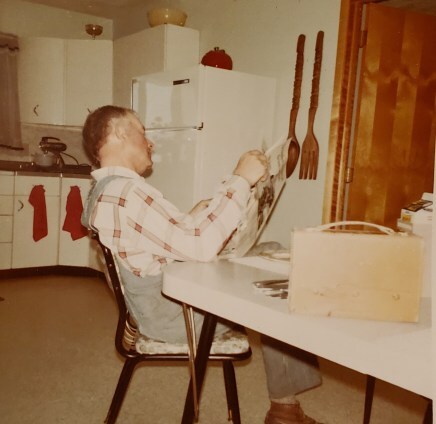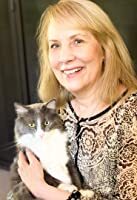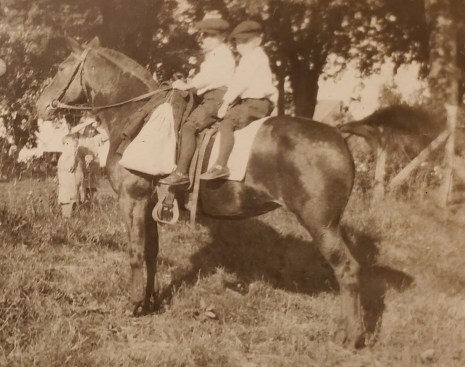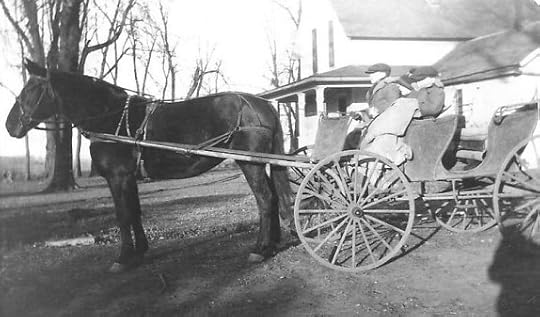Joy Neal Kidney's Blog, page 54
April 18, 2022
“There was a Time”: A poet deftly works through prostate cancer
There was a Time: poems, musings, and thought of experiencing cancer
by Andrew J. Reynolds
This is a poetic and emotional response to being treated for prostate cancer, which takes the reader on a poignant journey through the emotions of diagnosis, treatment and recovery. There was a Time also looks at the loss of the author’s mother to pancreatic cancer, and the difficulty of watching a loved one pass from this world to the next.

This poet, writer, blogger, woodworker, and computer engineer holds a BA in English from San Jose State University. Andrew Reynolds retired from the high-tech world of Silicon Valley and has moved to Reno, NV where he lives with his wife and three cats.
He actively blogs at www.andrewsviewoftheweek.com where he shares photos of his woodshop creations and posts short essays and poetry. I “met” Andrew through his delightful Friday blog posts.
There was a Time is not available through Amazon, but if you’re interested in it, contact Andrew here.
April 16, 2022
New Every Morning (poem)
In spite of chronic fatigue, bone and muscle tenderness,
Even with an arduous learning curve with this bionic shoulder,
Despite wrinkles and sags and old-lady hands,
I thank God every early morning for the age I am,
Even in this senior-citizenness,
God’s mercies are new every morning.
(from 2020)
April 13, 2022
Mom’s Youngstown Kitchen
After the folks bought a farm south of Dexter, 1952, Mom longed for a handier kitchen. When Dad installed her steel Youngstown cupboards and black countertops, she was just delighted!
 Found this on the internet, but it gives to the idea. Mom’s kitchen widow overlooked her garden, the farm yard with a grainery to the big red barn.
Found this on the internet, but it gives to the idea. Mom’s kitchen widow overlooked her garden, the farm yard with a grainery to the big red barn. Mom only had the Melmac dishes in pink and green.
Mom only had the Melmac dishes in pink and green.Mom decorated her clean white kitchen with pink and green. She even had pink and green square Melmac dishes which were large enough so that Uncle Bill didn’t have to pile food on top of food when he worked with Dad and had noon dinner with us.
It was the kitchen where I learned to cook, kinda. I could stir gravy, to ward off lumps, but didn’t know how came about in the first place. I could mix up a spice cake from scratch, but Mom took over from there–baking and frosting. Dad enjoyed spice cake so much that sometimes it never got frosted.
For 4-H projects, we had to learn to bake a cake from scratch to finish, to plan and cook a meal. All done in Mom’s Youngstown kitchen.
 What a familiar pose of Dad in his overalls reading The Des Moines Register. His portable radio is there so he’s been listening to the noon news and markets on WHO-Radio.
What a familiar pose of Dad in his overalls reading The Des Moines Register. His portable radio is there so he’s been listening to the noon news and markets on WHO-Radio.Mom stirred up her famous caramel-pecan cloverleaf rolls in that kitchen, and her sought-after Christmas caramels, her wonderful potato salad.
Later, I see, she changed the pink and green to red. Their son-in-law bought the large spoon and fork on the wall when he was stationed in Vietnam.
At some point, even Mom’s kitchen was remodeled again, but it seems like she’d been even more satisfied with those clean white Youngstown steel cupboards in the 1950s.
April 11, 2022
Doll God (poetry) by Luanne Castle
Doll God by Luanne Castle
 The author: Luanne Castle has been a Fellow at the Center for Ideas and Society at the University of California, Riverside. She studied English and creative writing at the University of California, Riverside; Western Michigan University; and Stanford University. Her poetry and creative nonfiction as appeared in several journals, and she had contributed to Twice-Told Children’s Tales: The Influence of childhood Reading on Writers for Adults.
The author: Luanne Castle has been a Fellow at the Center for Ideas and Society at the University of California, Riverside. She studied English and creative writing at the University of California, Riverside; Western Michigan University; and Stanford University. Her poetry and creative nonfiction as appeared in several journals, and she had contributed to Twice-Told Children’s Tales: The Influence of childhood Reading on Writers for Adults.

My thoughts: This delightful collection of emotions and images has dolls woven throughout. The variety took me to unfamiliar experiences with the ocean and with the southwest. I especially enjoyed Sonoran October. Also two poems together mentioning the “debris of another generation” and the “sediment of memory.” Beautifully wrought.
There is a delightful connection to the doll on the cover in this blog post.
Luanne’s website.
Her Amazon Author page.
Last April I featured Luanne’s compelling collection of ancestral poems, Kin Types, which has nudged me to explore my own family stories in poetry form.
The theme for National Poetry Month 2022 is There’s A Poem in This Place. Two places to find contemporary poetry at its most vibrant are in the blogging community and at live readings. On 23 April 2022 from 4-5:30 PM ET, the two places come together when a select group of poets from the blogosphere present a live reading of their poetry at Poets in the Blogosphere. Most poetry is meant to be read aloud, and hearing poets read their own work is a heightened experience. The event is moderated by Elizabeth Gauffreau, and one of the featured poets is Luanne Castle.
Luanne’s blog post today is related, with a darling photo of the doll with a tiny surprise.
April 8, 2022
Getting the Wilson Kids to School was a Lot of Responsibility for a Young Boy
Clabe and Leora Wilson were tenant farmers from 1923 until 1926 for B.C. Hemphill. The house was a couple of miles southeast of Dexter.
Delbert and Donald rode the landlord’s gentle horse Nancy to school, after their dad Clabe saddled her. They housed Nancy in Mr. Hemphill’s barn in town during the day. Delbert was 8 years old.
 Delbert and Donald, just arrived home from school. Donald’s 7th birthday, September 14, 1923, SE of Dexter
Delbert and Donald, just arrived home from school. Donald’s 7th birthday, September 14, 1923, SE of DexterWhen Doris started first grade in 1924, Clabe taught Delbert, age 9, to drive Nancy with a buggy.
 This 1924 photo shows Nancy with Delbert, Doris, and Donald, with part of the house.
This 1924 photo shows Nancy with Delbert, Doris, and Donald, with part of the house.Twins Dale and Darlene began school in 1926, so the “Wilson school bus” got larger. Delbert, just 11 years old, was in charge of making sure that all five of them got to school and back home safely.

Do you know of grade-school children who have been entrusted with so much responsibility?
—–
Junior Wilson was the only one of the seven children born in Dallas County, at this place in 1925.
Because Dad’s sister and her family lived there during the 1950s, I knew the house from staying overnight with cousin Susan. Aunt Nadine hosted a bridal shower for me in that house, and invited Guy and me for supper right before he left for Vietnam in 1969.
The house and out-buildings have all been torn down, but I can visualize many of my mother’s stories about living there. I’d played on the same stairs where Doris, as a small child woke, had tiptoed partway down and watched her parents turning eggs to hatch in the new incubator in the living room.
The Wilson “school buses” show up in the last chapters of Leora’s Early Years: Guthrie County Roots, due out this summer.
April 6, 2022
From a Soldier’s Perspective (poetry) by Michael Lee Womack
 The Book: As soldiers who have just returned from war, we fight a separate war daily in an attempt to leave the war behind. Many soldiers, just like myself, come home from war only to fight a separate internal battle, with debilitating illnesses such as post traumatic stress disorder (PTSD) and depression. It was important for me to share my story not only for myself but for those who have fought, for those who have fallen, and for those who continue to wage war in order for the United States of America to continue to remain free. The price of freedom is not free.
The Book: As soldiers who have just returned from war, we fight a separate war daily in an attempt to leave the war behind. Many soldiers, just like myself, come home from war only to fight a separate internal battle, with debilitating illnesses such as post traumatic stress disorder (PTSD) and depression. It was important for me to share my story not only for myself but for those who have fought, for those who have fallen, and for those who continue to wage war in order for the United States of America to continue to remain free. The price of freedom is not free.
War is chaos, and many soldiers bear the scars from it for the rest of our lives.
 The Author: Michael Lee Womack is an 8-year veteran of the Gulf War. Michael deployed with the 3rd Infantry Division, Charlie Company 4-3 BSTB, to Ramadi, Iraq in support of Operation New Dawn from the summer of 2010 until the summer of 2011. His army career come to a close when was medically retired from the military in 2014. He had problems adjusting to civilian life and battling a tough bout with depression. God delivered him from depression, a testimony he now shares. In 2021, he earned his Bachelor of Arts with an area of study in English from Thomas Edison State University, hoping to become an English teacher.
The Author: Michael Lee Womack is an 8-year veteran of the Gulf War. Michael deployed with the 3rd Infantry Division, Charlie Company 4-3 BSTB, to Ramadi, Iraq in support of Operation New Dawn from the summer of 2010 until the summer of 2011. His army career come to a close when was medically retired from the military in 2014. He had problems adjusting to civilian life and battling a tough bout with depression. God delivered him from depression, a testimony he now shares. In 2021, he earned his Bachelor of Arts with an area of study in English from Thomas Edison State University, hoping to become an English teacher.
My Thoughts: Such honesty and angst. Fifty-two poems, divided into three parts: We Fight a Separate War Just to Leave the War Behind, War is Chaos, and Change of Perspective. Returning after the war of chaos turned into the daily war of PTSD and depression. The author traded a machine gun for a pen, as a way to cope with his hyper-vigilance and seeking for control and happiness. Writing poetry has become his “drug of choice.”
At first, I didn’t know whether I could read such raw honesty, but in doing so I began to get an inkling of his struggle. The author articulates from his soul. Especially poignant is “Remember,” the friend he lost in Iraq and what Memorial Day is all about. The price of war includes the casualties, but also those who return to a a private internal new war after leaving the military.
April 4, 2022
First time on #PJNET.tv
Thursday evening’s program was after my bedtime, but we did a run through a little earlier. What a pleasant surprise that host Mark Prasek led with Our American Stories.
I guess I do look like my mother these days. When he first saw the photo of Aunt Darlene and Mom, he didn’t realize it’d been taken in 1997. Those sisters were about my age when they made the trip to visit their brother Danny Wilson’s grave in eastern France.
This lasts 20 minutes, if you’d like to watch it.
April 1, 2022
Grief Songs (poetry) by Elizabeth Gauffreau
Grief Songs

I’ve gotten in the habit of reading poetry books twice. The first time, I begin to get nuances and a sort of orientation about the poet. With “Grief Songs” I also got acquainted with the Tanka form of poetry, which brings with it a new set of nuances.
That second emersion into the poems, and those winsome photos, was such a bittersweet journey through grief over profound losses but also deeply layered family love. The pipe, those saddleshoes, a dress with smocking–what endearing details. Tears welled up when I resavored the one called “Time.” A very compelling collection.
The Author
 Elizabeth Gauffreau
Elizabeth GauffreauElizabeth Gauffreau writes fiction and poetry with a strong connection to family and place. She holds a B.A. in English from Old Dominion University and an M.A. in English/Fiction Writing from the University of New Hampshire. She is currently the Assistant Dean of Curriculum & Assessment for Champlain College Online, where she is an Associate Professor. Her fiction and poetry have been published in literary magazines and several themed anthologies. Her debut novel, Telling Sonny, was published by Adelaide Books in 2018. Liz lives in Nottingham, New Hampshire with her husband.
Elizabeth’s website.
Her Amazon Author Page.
March 30, 2022
Interview Thursday on PJNET

Confession: I avoid TV. Don’t watch it, haven’t asked for an interview even for the Leora stories. Then I was invited to one online. When? Thursday, at my bedtime. My first reaction was to decline.
But I follow the blog and social media of the Texas rancher and cattleman who suggested me as a guest. J.D. Wininger is such an encourager, sharing the posts of so many, along with positive comments.
In his recent poignant post, “The Quiet Cowboy,” you’ll quickly get to know him and his heart for the Lord. He’s been a guest on PJNET, adding details to his quiet cowboy story.
Bottom line: Believing this is a God-nudge, I said yes. (Mum about my fibromyalgia-self that late in the day.)
If you’d like in on it, I think there’s a button on PJNET where you can click “interested” or “going,” and you can make comments while it’s being streamed. (Thursday, 8:00 pm CDT)

March 28, 2022
MMR, Measles, and Milk Toast
Kids don’t come down with measles anymore. Did you have it as a child?
Because of the MMR vaccine, which protects against mumps and rubella as well, measles has been declared eradicated in the US for a couple of decades. It was one of the most contagious diseases.
Measles is a highly contagious disease which lasts a week or more. It usually begins with fever, cough, runny nose, and inflamed eyes. A rash, starting on the face and spreading to the rest of the body, usually starts three to five days later. Common complications include diarrhea, earache, and pneumonia.
I think I’d just started school (about 1950) when I came down with it. So did my sister, two years younger. Mom kept us in the downstairs bedroom with the shades pulled, because of the belief at the time that light might increase the chances of losing your vision.
 It was hard to pursue our coloring book artwirj in such a gloomy room. The house didn’t have closets but a wardrobe sat along the wall. Our tiny starched and ironed pinafores, which Mom embellished with embroidered lambs, hung in the wardrobe, which holds bedding today in our basement.
It was hard to pursue our coloring book artwirj in such a gloomy room. The house didn’t have closets but a wardrobe sat along the wall. Our tiny starched and ironed pinafores, which Mom embellished with embroidered lambs, hung in the wardrobe, which holds bedding today in our basement.
—–
Mom’s family came down with measles in the mid-1920s. Delbert and Donald probably brought it home from school and infected the rest of the youngsters.
Leora concocted a remedy for each one of the sufferers, probably the same one created for her as a child, milk toast.
Milk Toast (Poem) RecipePlace cubes of bread,
preferably homemade,
in a favorite bowl.
Add a little milk.
Sprinkle with brown sugar.
Carry to a darkened room,
for a suffering child
to bask in mother's comfort.



